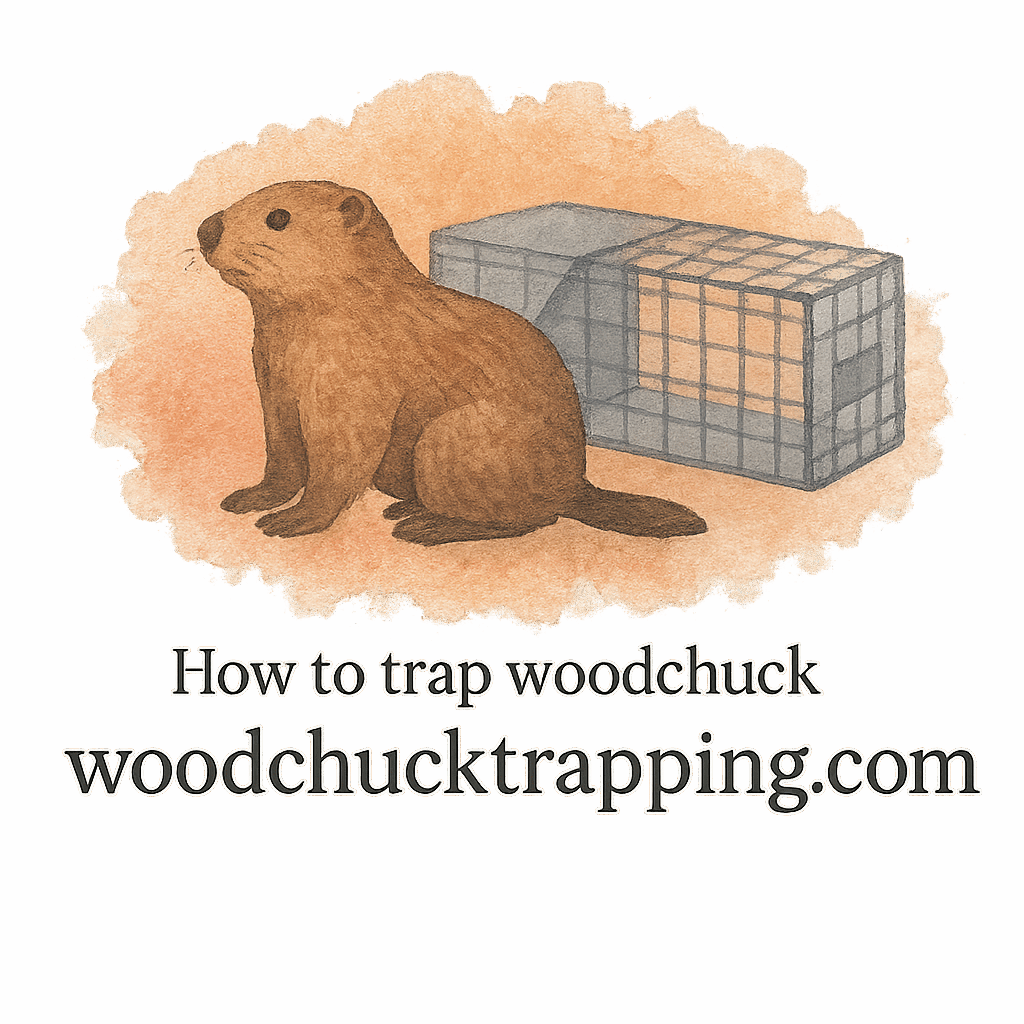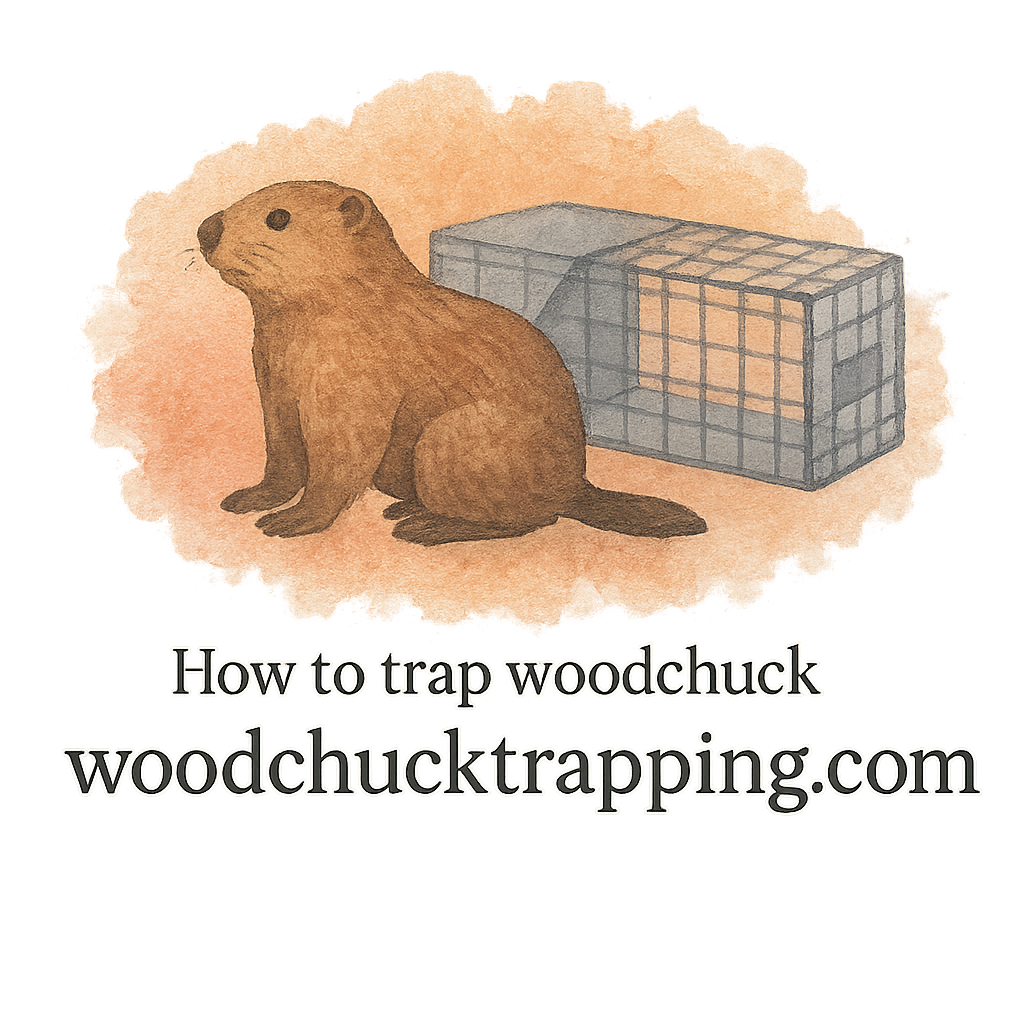Introduction: Why Myths About Woodchuck Trapping Persist
Woodchucks, also called groundhogs, may look cute with their chubby cheeks and fuzzy coats, but ask any homeowner with a ruined garden or collapsing burrow under their shed, and you’ll hear a different story. Over the years, a lot of myths and misinformation about woodchuck trapping techniques have spread, making it harder for people to deal with infestations effectively. Today, we’re going to bust 11 of the most common myths about trapping these critters so you can take back your yard confidently and humanely.
If you’ve ever wondered whether bigger traps are better, if gloves really matter, or whether woodchucks only dig in large properties, you’re in the right place. Let’s set the record straight.
Myth #1: Woodchuck Trapping Is Always Inhumane
Some people believe trapping woodchucks is automatically cruel. But that couldn’t be further from the truth.
The Truth About Humane Trapping
With the right humane techniques, trapping can actually be one of the most effective and animal-friendly ways to deal with woodchuck problems. Live traps allow you to relocate the animal safely and minimize stress. It’s about the method, not the act of trapping itself.
Choosing the Right Trap Gear
Using proper trap gear like padded or wire-mesh traps ensures animals don’t get injured. Pairing the trap with the right trapping essentials makes all the difference between a harmful and a safe experience.
Myth #2: Any Food Works as Bait
Throw in an apple core, and you’ll catch a woodchuck—right? Wrong.
The Importance of Scent Bait and Lure
Woodchucks are picky. Using the right scent bait and lure is key. They respond best to fresh vegetables, apples, or commercial woodchuck lures designed specifically for attracting them.
Best Practices for Baiting & Luring
Check out this detailed baiting & luring guide. A strong lure increases your success rate dramatically, while poor bait can waste days of effort.
Myth #3: Bigger Traps Always Work Better
It seems logical: a larger trap means a better chance of catching the animal. Not exactly.
Compact Traps and Minimal Space Solutions
In reality, woodchucks often prefer compact traps, especially in areas with minimal space. Bigger isn’t always better—sometimes a smaller, properly placed trap gets the job done faster.
Myth #4: Woodchucks Only Burrow in Large Yards
You don’t need acres of land to find woodchucks digging tunnels under your property.
Spotting Signs in Small Yard Spaces
Even a small yard can become a prime target for woodchucks.
Recognizing Burrows and Infestation Early
Look out for burrows near foundations, fences, or sheds. These signs of infestation are easy to miss until the damage becomes serious.

Myth #5: Gloves Aren’t Necessary When Handling Traps
Think you don’t need gloves? Think again.
Safety First: Why Handling Gear Matters
Wearing gloves isn’t just about protecting your hands. Human scent can ruin your setup. A woodchuck that smells you on the trap is less likely to approach. Plus, gloves protect you when dealing with a trapped animal.
Myth #6: Trapping is Illegal Everywhere
Many assume trapping woodchucks is against the law.
Knowing the Laws and Safety Guidelines
Trapping is legal in many areas, but local regulations vary. Before setting up, check your region’s laws & safety guidelines. Being informed saves you from fines and ensures humane practices.
Myth #7: Once Trapped, the Problem Is Over
Catching one woodchuck doesn’t mean your troubles are gone.
Prevention and Long-Term Damage Control
Unless you implement prevention strategies, another groundhog will move right in. Reinforce weak areas, install fencing, and monitor regularly to avoid repeated damage.
Myth #8: All Trapping Techniques Are the Same
People often think there’s only one way to trap a woodchuck.
Different Trapping Techniques for Different Situations
From cage traps to one-way doors, there are multiple trapping techniques. Each works best under different conditions.
How-to-Trap Tips for Success
For practical advice, explore these how-to-trap resources and trapping essentials. Tailor your approach to maximize success.
Myth #9: Trapped Animals Can Be Handled Easily
Seeing a woodchuck in a cage may seem harmless, but don’t underestimate them.
The Risks of Improper Handling
Improper handling can lead to bites, scratches, or disease exposure. Always prioritize safety when dealing with trapped wildlife.
Myth #10: Woodchucks Aren’t a Big Problem
“Just let them be—they don’t cause much trouble.” Wrong again.
Understanding Yard Damage and Infestation Risks
Woodchucks can cause severe yard damage by undermining structures and devouring crops. Left unchecked, a single woodchuck can turn into a serious infestation.
Myth #11: Anyone Can Trap Without Experience
Trapping looks easy—set a cage, catch an animal. But reality is trickier.
Why Knowledge of Trapping Essentials Matters
Without the right trapping techniques, tools, and knowledge of trap scent, your success rate plummets. That’s why resources like equipment reviews and trapping gear guides are so valuable.
Conclusion: Separating Fact from Fiction
Woodchuck trapping doesn’t have to be overwhelming, and it certainly doesn’t have to be inhumane. By debunking these 11 myths, you now know the importance of using the right traps, gloves, baits, and techniques—all while following local safety guidelines. Remember, prevention is just as important as catching the animal itself.
If you’re ready to take action, explore detailed guides and resources at Woodchuck Trapping to make sure you’re fully prepared for success.
FAQs
1. What is the most effective bait for trapping woodchucks?
Fresh vegetables like carrots, apples, and commercial lures are highly effective.
2. Can I trap woodchucks without using gloves?
Not recommended. Gloves prevent scent contamination and protect your hands.
3. Do woodchucks only live in rural areas?
No, even small yards can attract them if food and shelter are available.
4. Are all traps legal to use?
Not always. Check laws and safety guidelines in your area before trapping.
5. How do I know if woodchucks are damaging my property?
Look for burrows, garden destruction, or other signs of activity.
6. Is one trapped woodchuck the end of the problem?
No, you need ongoing prevention measures to stop future infestations.
7. Where can I find reliable trap gear recommendations?
Check out these equipment reviews for trusted insights on the best tools.


